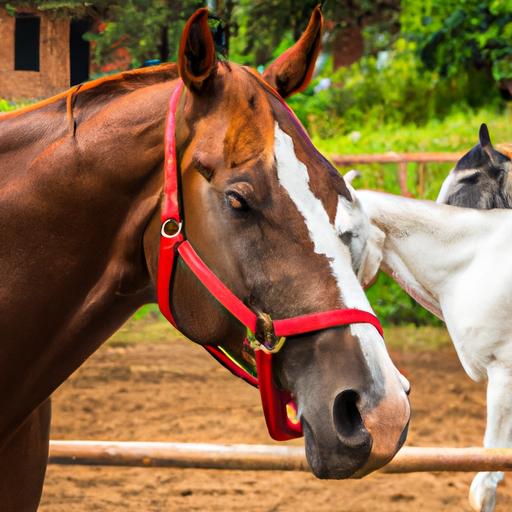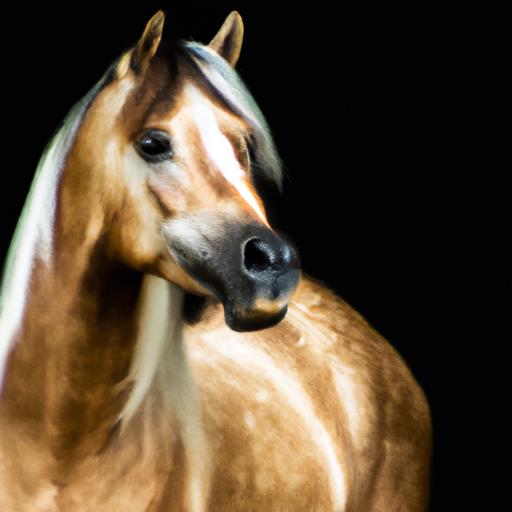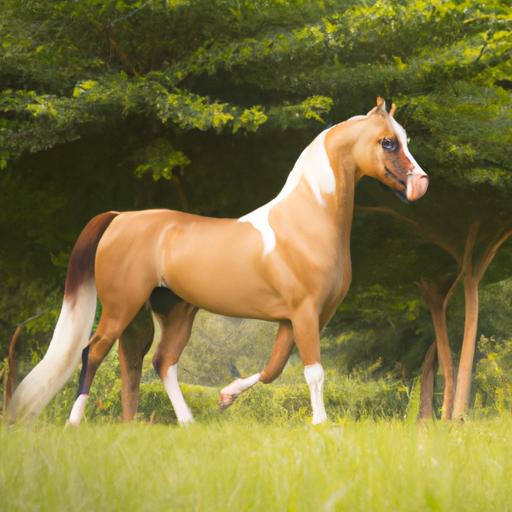Unlock the secrets of equine diversity with our comprehensive horse breeds encyclopedia. Discover the history, characteristics, and unique traits of various horse breeds.
As horse enthusiasts, we are captivated by the sheer beauty and magnificence of these noble creatures. Their strength, grace, and unique characteristics have fascinated humans for centuries. Whether you are a seasoned rider, a horse owner, or simply someone who appreciates these majestic animals, understanding horse breeds is crucial to deepening your connection with them. That’s where the Horse Breeds Encyclopedia comes into play – a comprehensive guide that unravels the secrets of equine diversity.
Why Understanding Horse Breeds Matters

Have you ever wondered why some horses are better suited for racing while others excel in dressage or jumping? The answer lies in their breeds. Each horse breed has distinct traits, characteristics, and abilities that make them perfectly suited for specific activities and disciplines. Understanding these differences allows you to make informed decisions when selecting a horse for a particular purpose, ensuring a harmonious partnership and maximizing your enjoyment.
Unveiling the Horse Breeds Encyclopedia

The Horse Breeds Encyclopedia is a treasure trove of knowledge that showcases the vast array of horse breeds from around the world. This comprehensive resource compiles information on popular breeds, lesser-known gems, and even rare and endangered breeds. With detailed descriptions, historical context, and stunning visuals, the encyclopedia serves as your gateway to the enchanting world of equine diversity.
Benefits of Using a Horse Breeds Encyclopedia

Imagine having a wealth of information at your fingertips, empowering you to make well-informed decisions and ignite your passion for horses. The Horse Breeds Encyclopedia offers numerous benefits for horse enthusiasts like you:
-
Educational Insights: Dive into the fascinating history of horse breeding, unravel the origins of various breeds, and explore the cultural significance behind their development. Discover how different breeds have evolved over time, adapting to their environments and acquiring unique characteristics.
-
Breed Selection Guidance: Whether you’re in the market for a new horse or seeking to understand your current equine companion better, the encyclopedia provides invaluable guidance. Explore breed profiles, learn about their physical attributes, temperament, and strengths, helping you make the perfect match for your desired equestrian pursuits.
-
Appreciating Diversity: The horse breeds encyclopedia celebrates the rich tapestry of equine diversity. Delve into the lesser-known and rare breeds, expanding your horizons and developing a deeper appreciation for the myriad of horse breeds that exist worldwide.
Embark on an enchanting journey through the Horse Breeds Encyclopedia, where knowledge awaits at every turn. Expand your understanding, forge stronger bonds with these remarkable animals, and unlock the secrets of the equine world. Remember, a horse breeds encyclopedia isn’t just a reference book; it’s a portal to a world where dreams come alive and passion reigns supreme.
Stay tuned for the upcoming sections, where we will explore popular horse breeds, lesser-known gems, and even rare and endangered breeds. Let’s embark on this extraordinary adventure together!
Continue to Section II: Understanding Horse Breeds
Understanding Horse Breeds
Horses have been our steadfast companions for centuries, serving us in various capacities. To truly appreciate these magnificent creatures, it is essential to understand the concept of horse breeds. In this section, we will delve into the definition of horse breeds, explore their historical significance, uncover the purpose of categorizing them, and shed light on the significance of breed characteristics.
Definition of Horse Breeds
Horse breeds can be defined as distinct groups of horses that share common ancestry, physical attributes, and characteristics. These breeds are the result of selective breeding, where humans have carefully chosen and preserved specific traits over generations. The classification of horses into breeds helps us categorize and identify them based on their unique qualities, enabling us to better understand their capabilities and potential.
History of Horse Breeding
The practice of horse breeding dates back thousands of years, with ancient civilizations recognizing the value of selectively breeding horses to enhance desirable traits. From the Arabian horses of the Middle East to the warhorses of medieval Europe, the history of horse breeding is intertwined with human history. Over time, different regions developed their own distinct breeds, each tailored to suit the specific needs and preferences of their respective cultures.
Purpose of Categorizing Horse Breeds
Categorizing horse breeds serves several important purposes. Firstly, it allows us to classify horses based on their intended use or purpose, such as racing, jumping, or working. This categorization helps horse enthusiasts select the most suitable breed for their intended activities, ensuring optimal performance and success.
Furthermore, categorization enables breeders to maintain breed standards and preserve the unique characteristics of each breed. By carefully selecting and breeding horses with desired traits, breeders can ensure the continuation of specific traits and qualities that define a particular breed.
Significance of Breed Characteristics
Breed characteristics play a vital role in determining a horse’s suitability for different activities and disciplines. Physical attributes, such as size, conformation, and coat color, can impact a horse’s performance and abilities. Temperament, intelligence, and natural aptitude are also important factors that influence a horse’s suitability for specific tasks.
Understanding breed characteristics allows us to appreciate the beauty and diversity of different horse breeds. It helps us identify the strengths and limitations of each breed, allowing us to make informed decisions when selecting a horse for a particular purpose.
By grasping the definition of horse breeds, acknowledging their historical significance, understanding the purpose of categorization, and recognizing the significance of breed characteristics, we can embark on a journey of discovery through the fascinating world of equine diversity.
Continue to Section III: Popular Horse Breeds
Popular Horse Breeds
When it comes to horse breeds, there are a few that have captured the hearts and imaginations of equestrians worldwide. These breeds have carved their place in history, showcasing their exceptional abilities and captivating beauty. Let’s explore three of the most beloved and renowned horse breeds: the Thoroughbred, the Arabian, and the Quarter Horse.
Thoroughbred: A Legacy of Speed and Elegance
1. History and Origin
The Thoroughbred breed traces its roots back to 18th-century England, where it was developed for horse racing. This breed emerged from a careful selection of Arabian, Turkoman, and Barb horses, resulting in a horse known for its exceptional speed and endurance. Today, Thoroughbreds continue to dominate the racing world, captivating audiences with their grace and power.
2. Physical Characteristics
Thoroughbreds are known for their sleek and athletic build. They typically have a slim body, long legs, and a deep chest, enabling them to reach impressive speeds. Their average height ranges from 15 to 17 hands, and they come in various solid colors, including bay, chestnut, and gray.
3. Common Uses and Activities
While Thoroughbreds are primarily associated with horse racing, their versatility extends beyond the track. These horses excel in other equestrian disciplines, such as show jumping, eventing, and dressage. Their athleticism, agility, and willingness to perform make them sought after in the competitive world of equestrian sports.
Arabian: The Essence of Beauty and Spirit
1. Origin and Background
Originating from the Arabian Peninsula, the Arabian horse is one of the oldest and most influential breeds in the world. Its history dates back thousands of years, with Bedouin tribes treasuring these horses for their loyalty, endurance, and beauty. Arabians have played a significant role in shaping other breeds, contributing their refined characteristics and fiery spirit.
2. Notable Physical Features
Arabians are known for their distinctive appearance, characterized by a dished face, high-set tail, and a finely chiseled head. They have a compact body, arched neck, and a strong, sturdy build. Their expressive eyes and refined features add to their allure, making them easily recognizable.
3. Unique Qualities and Uses
Beyond their striking looks, Arabians possess exceptional intelligence, sensitivity, and a strong bond with their human partners. They excel in various disciplines, including endurance riding, where their stamina and endurance shine. Arabians also make excellent pleasure horses, showcasing their versatility in trail riding, dressage, and even as trusted companions.
Quarter Horse: The All-American Athlete
1. Origins and Development
The Quarter Horse, often hailed as America’s horse, originated in the United States during the colonial era. Bred from a combination of Thoroughbreds and local stock horses, this breed was developed for short-distance races, ranch work, and versatility. The Quarter Horse’s name originates from its unparalleled speed in quarter-mile sprints.
2. Distinctive Physical Traits
Quarter Horses are known for their muscular build, powerful hindquarters, and broad chests. They have a compact body, with an average height ranging from 14 to 16 hands. This breed comes in a variety of colors and patterns, including sorrel, bay, and palomino, captivating the eye with its vibrant coat.
3. Popular Disciplines and Activities
Renowned for their versatility, Quarter Horses participate in a wide range of equestrian activities. Their exceptional agility and cow sense make them highly suitable for ranch work and Western disciplines such as reining, cutting, and roping. Additionally, their calm temperament and willingness to please make them popular choices for pleasure riding and trail competitions.
These three popular horse breeds, the Thoroughbred, Arabian, and Quarter Horse, exemplify the diversity and beauty of equine companions. Each breed boasts its own rich history, unique characteristics, and a myriad of talents. Whether you’re captivated by the elegance of Thoroughbreds, the spirit of Arabians, or the versatility of Quarter Horses, these breeds offer endless possibilities for equestrians seeking their perfect equine partner.
Continue to Section IV: Lesser-known Horse Breeds
Section IV: Lesser-known Horse Breeds
When it comes to horse breeds, there are those that have gained widespread recognition and popularity, and then there are the hidden gems that deserve our attention. In this section, we will explore two lesser-known horse breeds that have unique qualities, fascinating histories, and a dedicated following: the Icelandic Horse and the Akhal-Teke.
A. Icelandic Horse
1. History and Origin
The Icelandic Horse, also known as the “Viking Horse,” can trace its roots back over a thousand years. Brought to Iceland by Norse settlers, these horses have remained relatively isolated on the island, leading to a breed that has retained its purity and original characteristics. The Icelandic Horse is a living relic, embodying the strength and resilience of its Viking ancestors.
2. Special Characteristics
One of the most remarkable aspects of the Icelandic Horse is its unique gait, the tölt. This smooth, four-beat gait provides an incredibly comfortable ride, making it ideal for long journeys or traversing challenging terrains. Additionally, Icelandic Horses come in a range of colors, from solid to spotted, adding to their allure and individuality.
3. Traditional Uses and Modern Adaptations
Throughout history, Icelandic Horses have been indispensable to the Icelandic people. They were used for transportation, herding livestock, and even as war mounts. Today, these versatile horses continue to play a vital role in Icelandic culture, participating in traditional competitions such as the “Gæðingur” and “Félagsskeið.” Furthermore, Icelandic Horses have found a new niche in recreational riding and various equestrian sports worldwide, captivating riders with their charming personalities and exceptional abilities.
B. Akhal-Teke
1. Background and Heritage
Originating from Turkmenistan, the Akhal-Teke breed is one of the oldest and most revered horse breeds in the world. With a lineage dating back over 3,000 years, these horses have been cherished by nomadic tribes and emperors alike. The Akhal-Teke’s exceptional endurance, speed, and elegance have earned it the title of the “Golden Horse.”
2. Noteworthy Physical Attributes
The Akhal-Teke’s most notable feature is its stunning metallic coat, which can shimmer in various shades of gold, silver, and bronze. This lustrous coat, combined with its slender build and expressive eyes, creates a truly captivating appearance. The breed’s fine and long limbs contribute to its exceptional agility and grace, making it a sight to behold.
3. Cultural Significance and Equestrian Applications
The Akhal-Teke holds deep cultural significance in Turkmenistan, where it is considered a national treasure. These horses have been bred for speed and endurance, excelling in long-distance races and endurance competitions. Moreover, the Akhal-Teke’s striking appearance has made it a favorite among equestrian enthusiasts worldwide, gracing dressage arenas and show jumping circuits with its elegance and poise.
Discovering the Icelandic Horse and the Akhal-Teke opens our eyes to the remarkable diversity within the equine world. These lesser-known breeds embody the rich history, cultural significance, and unique qualities that make horses such captivating creatures. As we continue our exploration, we will delve into even more extraordinary breeds. Stay tuned for the upcoming sections!
Continue to Section V: Rare and Endangered Horse Breeds
Section V: Rare and Endangered Horse Breeds
In the vast tapestry of horse breeds, there are some that stand on the brink of extinction, their dwindling populations calling for our attention and action. This section of the Horse Breeds Encyclopedia sheds light on two remarkable breeds: Przewalski’s Horse and the Cleveland Bay. Let’s delve into their captivating stories and explore the efforts being made to ensure their survival.
A. Przewalski’s Horse: A Testament to Resilience
-
Background and Natural Habitat:
Przewalski’s Horse, also known as the Mongolian Wild Horse, is the only truly wild horse species left in the world. Originating from the steppes of Central Asia, this ancient breed has roamed the vast grasslands for thousands of years. Their natural habitat includes the remote regions of Mongolia, China, and Kazakhstan. -
Physical Characteristics and Adaptations:
Przewalski’s Horses possess a distinct appearance, characterized by their sturdy build, short stature, and a striking dun-colored coat. They have adapted to survive in harsh environments, enduring extreme temperatures, scarce food sources, and challenging terrain. -
Conservation Efforts and Current Status:
Due to habitat loss, hunting, and competition with domestic livestock, the population of Przewalski’s Horses dramatically declined in the 20th century. However, concerted conservation efforts, including captive breeding programs and reintroduction initiatives, have helped revive their numbers. Today, they are classified as endangered but have experienced a gradual increase in their population, offering hope for their long-term survival.
B. Cleveland Bay: Preserving a British Heritage
-
Historical Significance and Decline:
The Cleveland Bay, a breed native to England, holds a significant place in the country’s equestrian heritage. Originally bred as a versatile carriage horse, it gained popularity among British nobility and played a crucial role in transportation and agriculture. However, with the advent of mechanization and changing agricultural practices, the breed’s population declined drastically. -
Distinctive Appearance and Traits:
The Cleveland Bay boasts a distinctive bay coat, powerful build, and a kind yet courageous temperament. Known for their strength and endurance, they make exceptional driving and riding horses. Their versatility extends to various equestrian disciplines, including dressage, eventing, and show jumping. -
Preservation Programs and Future Prospects:
To protect and revive the Cleveland Bay breed, dedicated preservation programs have been established. These initiatives focus on breeding, raising awareness, and promoting their versatility and adaptability. While the breed’s population remains small, the dedication of breed enthusiasts offers hope for its continued existence.
As we explore these rare and endangered horse breeds, we witness the delicate balance between human intervention and nature’s resilience. The Przewalski’s Horse and the Cleveland Bay serve as reminders of the importance of conservation and our role in safeguarding the world’s equine heritage.
Continue to Section VI: Conclusion


